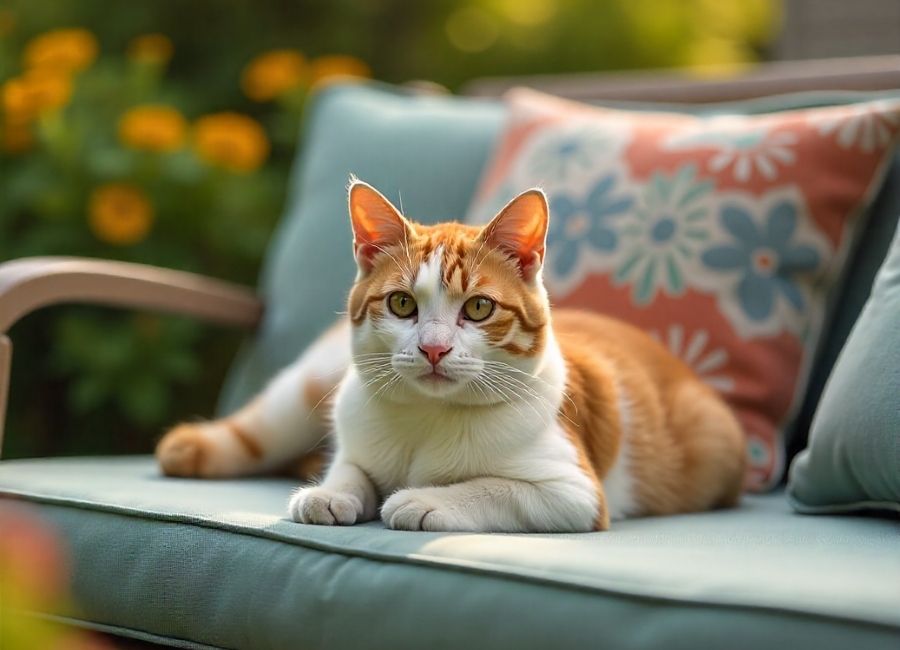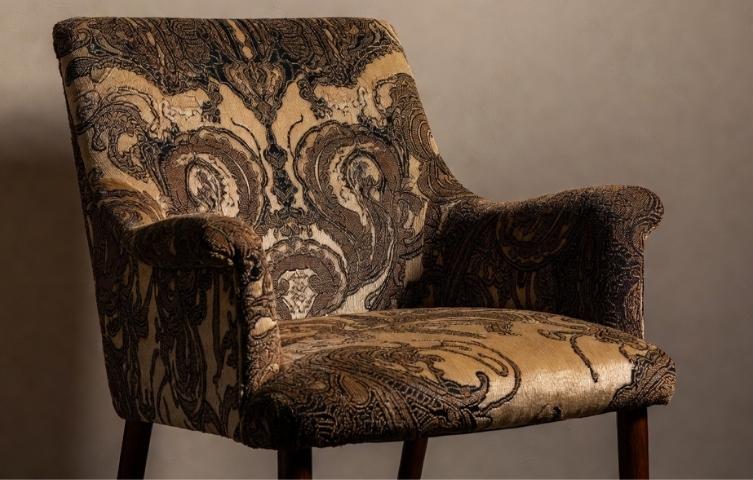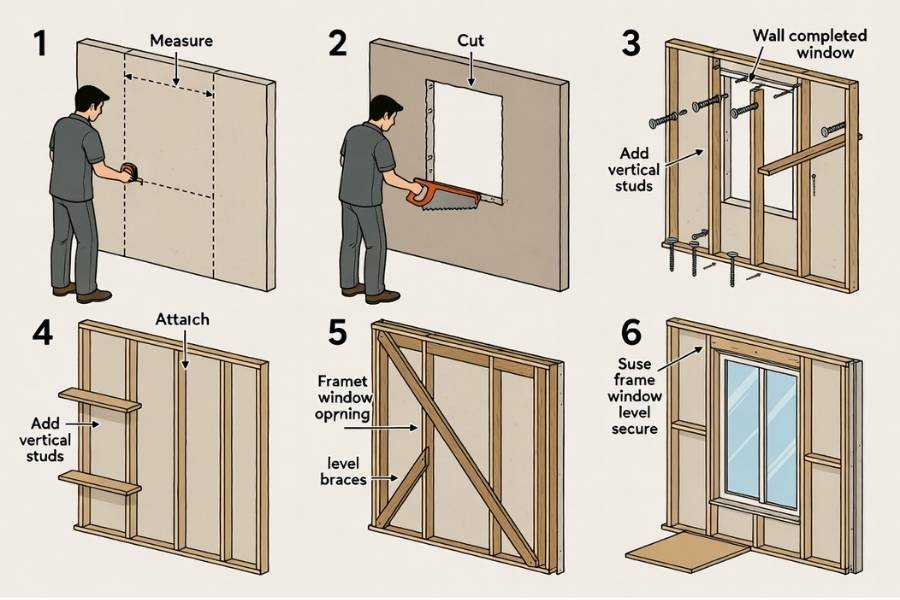Your beautiful outdoor furniture shouldn’t double as a feline playground. Whether it’s your own cats or neighborhood visitors turning your patio set into their personal scratching post and nap zone, reclaiming your outdoor space is entirely possible with the right approach.
Cat behavior stems from natural instincts—they seek comfortable spots for lounging, surfaces for scratching, and areas to mark as their territory. Understanding these motivations helps you choose effective deterrents that work with, rather than against, their nature. The key lies in making your furniture less appealing while providing better alternatives nearby.
This guide covers eight reliable methods to protect your outdoor furniture, from simple household solutions to specialized products designed specifically for this common problem. You’ll discover which approaches work best for different situations and how to implement them safely for both cats and your Family.
Understanding Why Cats Love Your Outdoor Furniture
Cats are drawn to outdoor furniture for several compelling reasons. Cushioned chairs and sofas provide the perfect combination of comfort and elevation that cats naturally seek. These spots offer excellent vantage points for observing their territory while staying cozy.
The materials commonly used in outdoor furniture also appeal to cats’ scratching instincts. Wicker, rope details, and certain fabrics provide satisfying textures for claw maintenance. Additionally, furniture that has been warmed by sunlight becomes irresistible to heat-seeking felines.
Territory marking also plays a significant role. Cats have scent glands in their paws and faces, making your furniture an ideal canvas for claiming ownership of your outdoor space.
Physical Barriers and Covers
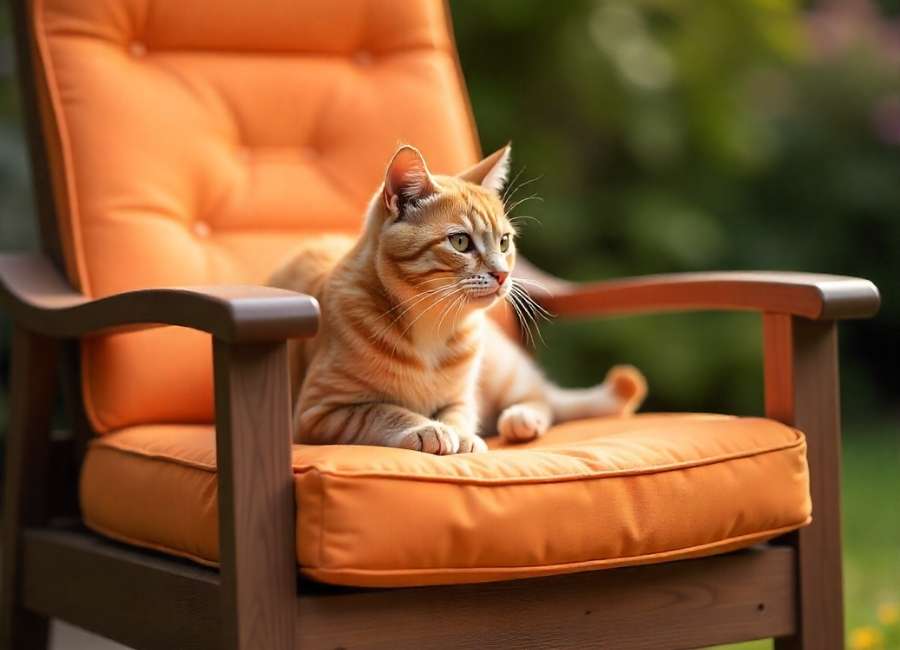
Furniture Covers
Waterproof furniture covers serve double duty—protecting from weather and deterring cats. Choose covers with smooth, slippery surfaces that cats find uncomfortable for lounging. Vinyl or plastic covers work particularly well since most cats dislike the texture and sound these materials make when touched. (What surface do cats hate?, n.d.)
Secure covers tightly to prevent cats from crawling underneath. Loose covers often become more appealing as they create cozy hiding spots.
Aluminum Foil and Plastic Sheeting
Many cats dislike the crinkly sound and texture of aluminum foil. (Here’s a Cat Reacting Accordingly to the Tin Foil Used to Keep It Off the Kitchen Counter, 2020) Tape sheets of foil to chair seats and table surfaces as a temporary deterrent. Replace the foil regularly as it loses effectiveness once cats become accustomed to it.
Clear plastic sheeting offers a similar effect with better durability. The slippery surface makes furniture uncomfortable for cats while remaining nearly invisible to human guests.
Strategic Furniture Placement
Position furniture away from cat highways—the routes cats typically use to move through your yard. Avoid placing seating near fence lines, garden beds, or other areas where cats are likely to travel.
Creating physical distance between furniture and cat-friendly features, such as bird feeders or water sources, also reduces unwanted visits.
Scent-Based Deterrents
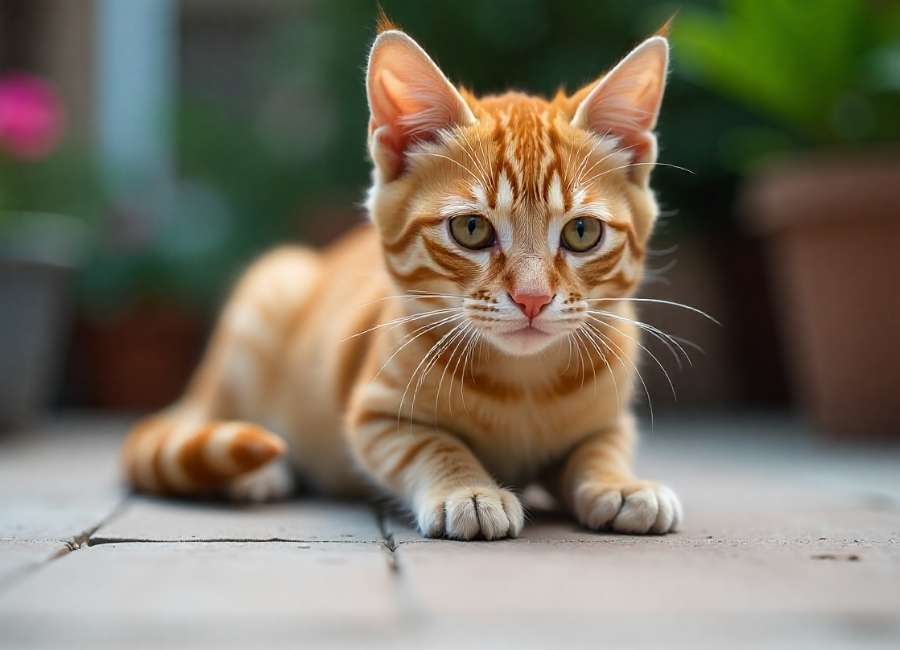
Commercial Cat Repellents
Pet stores offer a variety of spray repellents specifically designed for outdoor use. These products typically contain natural ingredients, such as citrus oils, eucalyptus, or predator scents, which cats instinctively avoid. (Mighty Petz Cat Deterrent Spray – Cat Indoor Repellent for Furniture, Plants, Couch Protector, 2025)
Apply repellent sprays according to the manufacturer’s directions, which usually require reapplication after rain or every few days. Test products on inconspicuous areas first to ensure they won’t damage your furniture materials.
Natural Scent Options
Citrus peels scattered around furniture create an effective, budget-friendly barrier. Orange and lemon peels work particularly well, though you’ll need to replace them regularly as they dry out and lose potency. (Do Orange Peels Deter Cats? A Complete Guide to Natural Cat Repellents, n.d.)
Coffee grounds offer another natural option. Sprinkle used grounds around the legs of furniture and cushions. The acidic scent deters cats while providing nutrients to nearby plants if the grounds wash into them.
Essential oils, such as peppermint, lavender, or eucalyptus, can be diluted with water and sprayed on furniture to create a refreshing scent. Always verify that chosen oils are safe for pets before application.
Vinegar Solutions
White vinegar’s strong scent effectively repels most cats. (Can Vinegar Keep Cats Away?, n.d.) Mix equal parts white vinegar and water in a spray bottle, adding a few drops of dish soap to help the solution adhere better.
Spray the mixture on furniture surfaces, focusing on areas where cats typically sit or scratch. Reapply weekly or after rain. The vinegar smell dissipates quickly for humans but lingers longer for cats’ sensitive noses.
Motion-Activated Deterrents
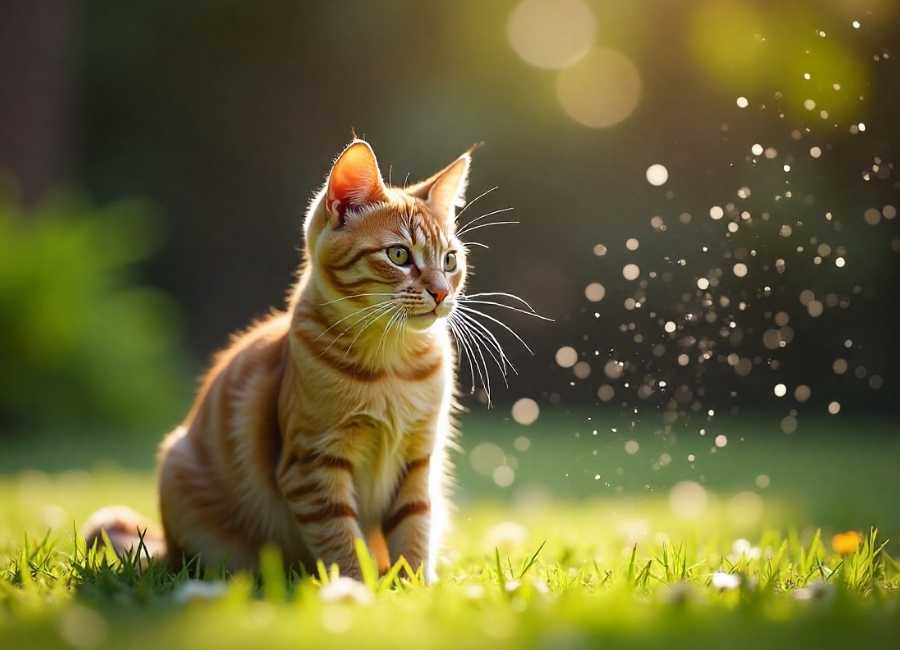
Sprinkler Systems
Motion-activated sprinklers offer highly effective cat deterrence without the need for chemicals or ongoing maintenance. (‘I have tried everything to stop deer destroying my garden’ – 10,000+ reviews say this $49 motion-activated sprinkler is the ‘only thing that works’, 2025) These devices detect movement and release a quick burst of water, startling cats and encouraging them to find alternative lounging spots.
Position sprinklers to cover furniture areas while avoiding human walkways. Most models allow sensitivity and spray duration adjustments to minimize false triggers from wind or small birds.
Sound and Light Devices
Ultrasonic devices emit high-frequency sounds that cats can hear but humans cannot. (Do ultrasonic animal repellers work on cats?, n.d.) Place these devices near furniture groupings, ensuring they’re positioned to cover the entire area you want to protect.
Motion-activated LED lights can also startle cats, though they’re less effective during daylight hours. Combine light devices with other deterrents for maximum effectiveness.
Texture Modifications
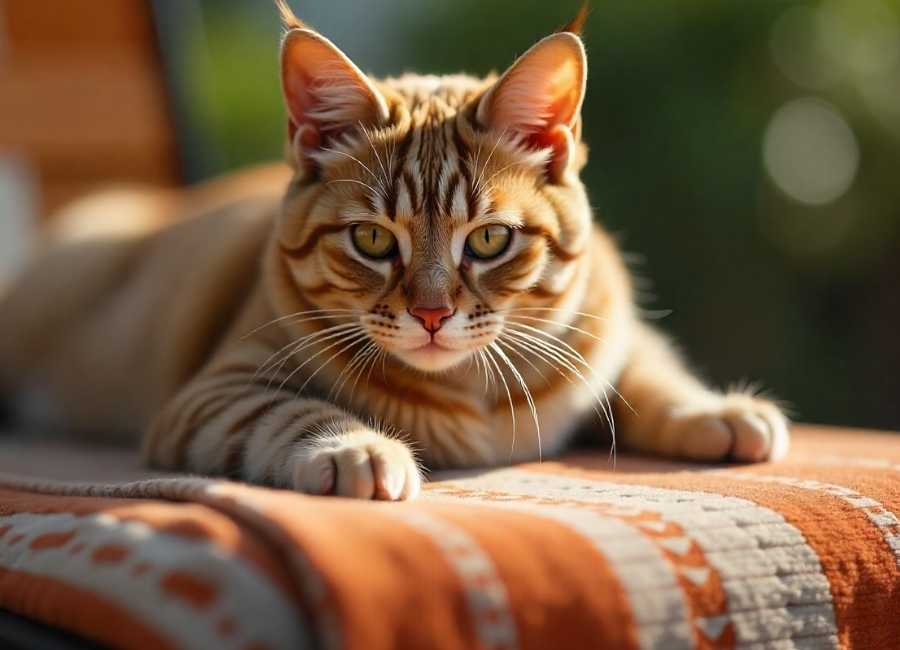
Uncomfortable Surfaces
Double-sided tape creates an immediately uncomfortable sensation on cats’ paws. (Sticky Paws Furniture Strips, n.d.) Apply strips to chair arms, table edges, and cushion surfaces. Select outdoor-rated tape that can withstand various weather conditions.
Upside-down carpet runners with the spike side facing up create an uncomfortable but harmless walking surface around furniture. (5 Ways to Keep Cats Away from Your Patio Furniture, n.d.) This method works particularly well for protecting the ground around seating areas.
Furniture Modifications
Adding smooth, slippery materials to furniture surfaces makes them less appealing to cats. (What surfaces do cats hate?, n.d.) Acrylic sheets can be temporarily attached to table tops, while smooth fabric covers eliminate scratching opportunities on textured materials.
Consider furniture designs that naturally deter cats—metal and glass pieces offer fewer comfortable surfaces than cushioned options.
Alternative Attraction Methods
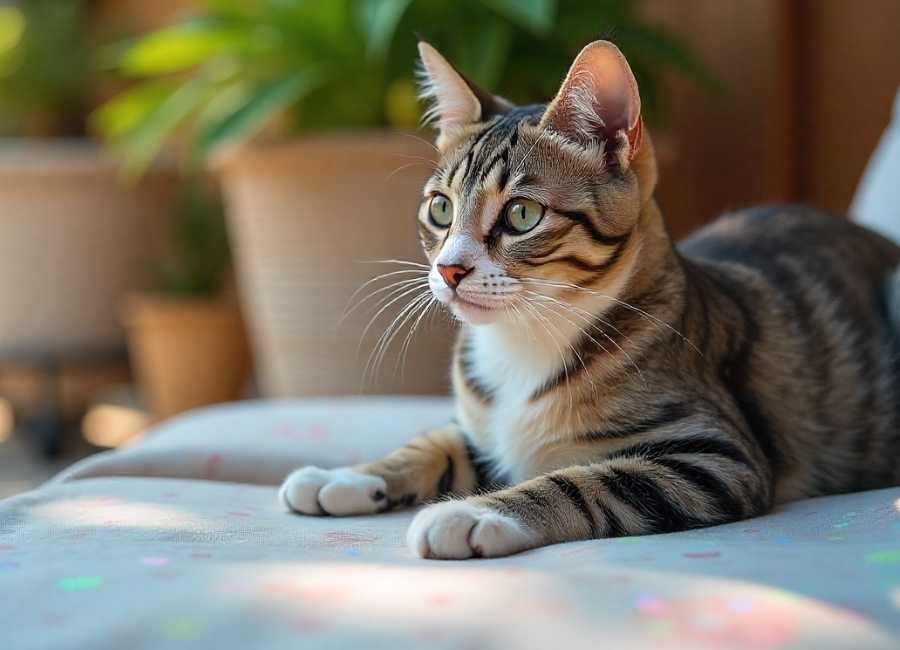
Designated Cat Areas
Create appealing alternatives away from your furniture. Install cat shelves, scratching posts, or comfortable bedding in areas where cat presence is acceptable.
Catnip, also known as silvervine, when planted in designated areas, attracts cats away from furniture. These alternatives satisfy cats’ needs while preserving your outdoor living space.
Feeding Stations
If stray or neighborhood cats are the primary concern, consider establishing feeding stations in areas away from your furniture and other sensitive areas. Well-fed cats are less likely to explore and claim territory around your seating areas.
Ensure that feeding stations comply with local ordinances and do not create additional problems with wildlife or neighbors.
Maintenance and Consistency
Successful cat deterrence requires consistent application of chosen methods. Cats are persistent and will regularly test boundaries, especially when initially introduced to new deterrents.
Rotate deterrent types periodically to prevent cats from becoming accustomed to specific methods. Combining multiple approaches—such as scent deterrents with physical barriers—often produces better results than relying on single solutions.
Monitor your furniture regularly for signs of cat activity. Fresh scratch marks or fur indicate the need to refresh or strengthen deterrent measures in specific areas.
Weather affects many deterrent methods, particularly scent-based solutions and physical barriers. Establish a routine for checking and refreshing deterrents, especially after storms or extended periods of rain.
Taking Back Your Outdoor Space
Protecting outdoor furniture from cats requires patience and persistence, but the right combination of methods can restore your patio or deck to its intended use by humans. Start with one or two approaches that best fit your situation and budget, then add additional deterrents if needed.
Remember that consistency is crucial—cats will quickly return if deterrent measures are neglected. Most homeowners find success within two to four weeks of implementing comprehensive deterrent strategies. (10 Tips Preventing Cats from Scratching Furniture in 2026, 2026)
Your outdoor furniture represents an investment in comfort and relaxation. With these proven methods, you can enjoy your outdoor space without worrying about unwanted feline visitors claiming your favorite chair.







